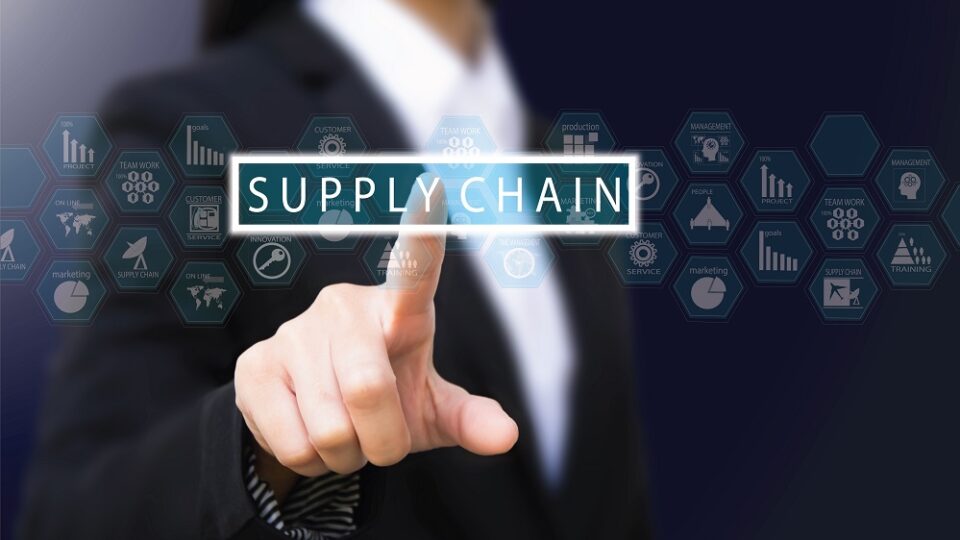Just as you don’t start worrying about your hot water heater’s performance until you get shocked by an icy-cold shower, most of us — even inside the retail industry — don’t think about supply chains until they stop working. (This is excepting, of course, the professionals tasked with maintaining and operating those supply chains.)

But after the wild pendulum swings caused by COVID — first not enough product, then a glut of it — the state of global supply chains deserves more sustained attention.
“While we’ve returned to some sense of normalcy, the VUCA [volatile, uncertain, complex and ambiguous] proposition has become a reality,” said Dr. Thomas Goldsby, Professor and Chair in Logistics in the Supply Chain Management Department of the University of Tennessee. “We’re now battle-tested.”
Goldsby, who discussed supply chain issues with Retail TouchPoints in May 2022, shared his thoughts on ways the industry can make supply chains both more reliable and cost-effective moving forward.
Advertisement
Retail TouchPoints (RTP): How are the increasing demands for fast fulfillment affecting supply chains? What kinds of pressures do these demands put on them?
Thomas Goldsby: It ripples up through the supply chain via a phenomenon we’ve been studying since 1958, the bullwhip effect of trying to meet changes in demand. In general, when you’re trying to speed up delivery and still provide a wide assortment of products, that puts the burden largely on inventory, and getting that inventory positioned close to the end consumer. That increases the need for [domestic] storage locations, including warehouses and retail stores that are close to where your markets are.
Even then, if we’re talking about next-day or even two-day delivery, [retailers] need to make sure they’re only making promises that they can actually keep. There’s a general rule-of-thumb relationship between inventory and in-stock availability. Let’s say you only promise an 80% in-stock level, which could either mean that only 80% of your product line is made available [for fast delivery], or that your full product assortment is available but only 80% of the time. What happens as you elevate that service level, to 85% or 95% or 100%, is that the [cost] curve starts to skyrocket — it becomes exponential. To provide a 99.5% in-stock commitment would take 6X as much inventory as the original 80% calculation — and it’s still not at 100%!
Retailers need to be very aware, if not outright cautious, about giving in-stock guarantees, because it’s exorbitantly expensive. What you offer [in terms of fast fulfillment], and to whom, is very important. Retailers have to right-size consumer expectations.
RTP: Given that danger of skyrocketing costs at one end of the supply chain, are there possibilities for savings elsewhere?
Goldsby: It’s getting tough to look under rocks for savings, despite all the talk about reshoring and nearshoring. And it’s important to remember that companies are often looking to source not finished goods but raw materials and components to feed nearshore production. That’s because it’s helpful to have that assembly operation come back to the [Western] hemisphere, even if there’s a premium on [doing assembly in higher-wage countries]. You’ll see some inventory savings by virtue of having that assembly closer [to the end consumer].
If you had a production site in, say, Mexico, it could hold on to raw materials and components for several months, if necessary, until demand required them to be made into finished products. Once these materials get dedicated to [making a particular product] for a specific customer or location, that’s when the stakes get raised. As we get closer to the consumer and items take on their final “identity,” that’s when they become really expensive. But if we can postpone the commitment of the final form of the product to an in-country or close-by location, that creates a substantial source of savings even if those production costs are higher. It’s an immutable law of the supply chain: the pile of cash gets bigger as you flow downstream toward the consumer.
We’re seeing some pretty significant movement in nearshoring, and if we could make it safer doing business in Mexico, we would see still more activity. There have been difficulties in getting people to work in hazardous locations [affected by illegal activities and drug gangs], but if those problems are dealt with, it could be an incredibly prosperous future for Mexico.
RTP: What impact do returns have on supply chain costs?
Goldsby: Well, the best return is the one that doesn’t happen, but you can’t stiff-arm customers — providing a bad customer experience is not a good idea. On the other hand, ultra-liberal return policies are fine for the customer experience, but they’re really expensive. For example, in some cases the retailer won’t make money if they have to ship the customer another item.
Some retailers have gone so far as to let customers just keep an item they want to return and still provide them with an instant refund. That’s the level of sophistication we’ve achieved, but you won’t want to do that indefinitely, because loads of fraud will be your reality.
You can incentivize customers to act in more cost-effective ways. For example, “If you want to return something and don’t bring it back to the store, we’ll charge you.” Or “I’ll be liberal with my return policy if you return the item within 14 days.” But the world is becoming more and more aware of returns’ impact on sustainability and carbon footprints, waste and incineration of [unsold or returned] goods. Essentially, there’s a sustainability “tax” on ultra-liberal return policies.
















